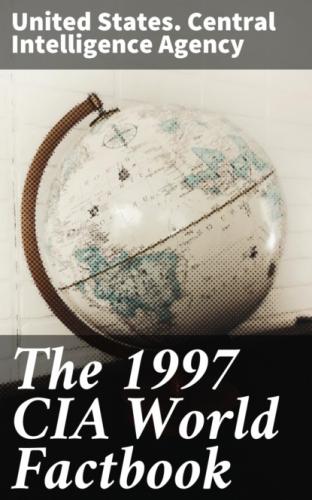Legislative branch: unicameral Legislative Council or Majlis Masyuarat Megeri (a privy council that serves only in a consultative capacity; NA seats; members appointed by the sultan) elections: last held in March 1962 note: in 1970 the Council was changed to an appointive body by decree of the sultan; an elected Legislative Council is being considered as part of constitutional reform, but elections are unlikely for several years
Judicial branch: Supreme Court, chief justice and judges are sworn in by the sultan for three-year terms
Political parties and leaders: Brunei United National Party (inactive), Anak HASANUDDIN, chairman; Brunei National Solidarity Party (the first legal political party and now banned), Mohamad HATTA bin Maji Zainal Abidin, secretary general; Brunei Peoples Party (banned), Sheik A. M. AZAHARI, leader; Brunei National Democratic Party or BNDP (deregistered), Haji Abdul LATIF bin Abdul Hamad, president
International organization participation: APEC, ASEAN, C, CCC, ESCAP,
G-77, IBRD, ICAO, IDB, IMF, IMO, Inmarsat, Intelsat, Interpol, IOC,
ISO (correspondent), ITU, Mekong Group, NAM, OIC, UN, UNCTAD, UPU,
WHO, WIPO, WMO, WTrO
Diplomatic representation in the US: chief of mission: Ambassador-designate Pengiran Anak Dato Haji PUTEH chancery: Watergate, Suite 300, 3rd floor, 2600 Virginia Avenue NW, Washington, DC 20037 telephone: [1] (202) 342–0159 FAX: [1] (202) 342–0158
Diplomatic representation from the US: chief of mission: Ambassador Glen Robert RASE embassy: Third Floor, Teck Guan Plaza, Jalan Sultan, Bandar Seri Begawan mailing address : American Embassy Box B, Bandar Seri Begawan, APO AP 96440 telephone: [673] (2) 229670 FAX: [673] (2) 225293
Flag description: yellow with two diagonal bands of white (top, almost double width) and black starting from the upper hoist side; the national emblem in red is superimposed at the center; the emblem includes a swallow-tailed flag on top of a winged column within an upturned crescent above a scroll and flanked by two upraised hands
Economy
Economy - overview: This small, wealthy economy is a mixture of foreign and domestic entrepreneurship, government regulation and welfare measures, and village tradition. It is almost totally supported by exports of crude oil and natural gas, with revenues from the petroleum sector accounting for perhaps half of GDP. Per capita GDP is among the highest in the Third World, and substantial income from overseas investment supplements income from domestic production. The government provides for all medical services and subsidizes food and housing. The government is beginning to show progress on its basic policy of diversifying the economy away from oil and gas. Brunei's leaders are concerned that steadily increased integration in the world economy will undermine internal social cohesion.
GDP: purchasing power parity - $4.6 billion (1995 est.)
GDP - real growth rate: 2% (1995 est.)
GDP - per capita: purchasing power parity - $15,800 (1995 est.)
GDP - composition by sector: agriculture : 3% industry: 46% services: 51% (1995 est.)
Inflation rate - consumer price index: 2.5% (1996 est.)
Labor force: total: 119,000 (1993 est.); note - includes members of the Army by occupation: government 48%, production of oil, natural gas, services, and construction 42%, agriculture, forestry, and fishing 4%, other 6% (1986 est.) note : 33% of labor force is foreign (1988)
Unemployment rate: 4.8% (1994 est.)
Budget: revenues: $2.5 billion expenditures : $2.6 billion, including capital expenditures of $768 million (1995 est.)
Industries: petroleum, petroleum refining, liquefied natural gas, construction
Industrial production growth rate: 2% (1995 est.)
Electricity - capacity: 344,000 kW (1995)
Electricity - production: 1.24 billion kWh (1994)
Electricity - consumption per capita: 4,003 kWh (1995 est.)
Agriculture - products: rice, cassava (tapioca), bananas; water buffalo, pigs
Exports: total value : $2.7 billion (f.o.b., 1995 est.) commodities: crude oil, liquefied natural gas, petroleum products partners: Japan 50%, UK 19%, Thailand 10%, Singapore 9% (1994 est.)
Imports: total value: $2 billion (c.i.f., 1995 est.) commodities : machinery and transport equipment, manufactured goods, food, chemicals partners: Singapore 29%, UK 19%, US 13%, Malaysia 9%, Japan 5% (1994 est.)
Debt - external: $0
Economic aid: $NA
Currency: 1 Bruneian dollar (B$) = 100 cents
Exchange rates: Bruneian dollars (B$) per US$1 - 1.4061 (January 1997), 1.4100 (1996), 1.4174 (1995), 1.5274 (1994), 1.6158 (1993), 1.6290 (1992); note - the Bruneian dollar is at par with the Singapore dollar
Fiscal year: calendar year
@Brunei:Communications
Telephones: 76,900 (1993)
Telephone system: service throughout country is adequate for present needs; international service good to adjacent Malaysia domestic: NA international: satellite earth stations - 2 Intelsat (1 Indian Ocean and 1 Pacific Ocean)
Radio broadcast stations: AM 4, FM 4, shortwave 0
Radios: 115,000 (1993)
Television broadcast stations: 1 (1984 est.)
Televisions: 78,000 (1993 est.)
@Brunei:Transportation
Railways: total: 13 km (private line) narrow gauge: 13 km 0.610-m gauge
Highways: total: 1,120 km paved: 388 km unpaved : 732 km (1995)
Waterways: 209 km; navigable by craft drawing less than 1.2 m
Pipelines: crude oil 135 km; petroleum products 418 km; natural gas 920 km
Ports and harbors: Bandar Seri Begawan, Kuala Belait, Muara, Seria,
Tutong
Merchant marine: total: 7 liquefied gas tankers (1,000 GRT or over) totaling 348,476 GRT/340,635 DWT (1996 est.)
Airports: 2 (1996 est.)
Airports - with paved runways: total: 1 over 3,047 m: 1 (1996 est.)
Airports - with unpaved runways: total: 1 914 to 1,523 m: 1 (1996 est.)
Heliports: 3 (1996 est.)
Military
Military branches: Land Forces, Navy, Air Force, Royal Brunei Police
Military manpower - military age: 18 years of age
Military manpower - availability: males age 15–49: 85,327 (1997 est.)
Military manpower - fit for military service: males: 49,466 (1997 est.)
Military manpower - reaching military age annually: males: 3,014 (1997 est.)
Military expenditures - dollar figure: $312 million (1994)
Military expenditures - percent
